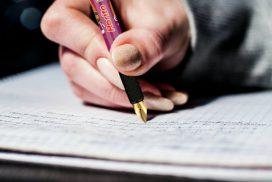Table of Contents
ToggleSupporting Students with Learning Difficulties Handwriting – Free Guide for Teachers & Schools

Supporting students with learning difficulties handwriting is one of the most important responsibilities of any teacher. For many children, handwriting is not just about neat letters; it’s the bridge between thought and expression. When that bridge is shaky, the result can be frustration, slower academic progress, and reduced confidence.
Learning difficulties such as dyslexia, dysgraphia, ADHD, or developmental coordination disorder (DCD) often make handwriting an uphill task. This free guide, developed by Writewiz and Lanchestter Academy Private Limited, blends over two decades of classroom practice with insights from neuroscience, occupational therapy, and educational psychology. It offers practical, research-backed strategies for making handwriting instruction inclusive, effective, and confidence-building for every student.
Why Supporting Students with Learning Difficulties in Handwriting Matters
Students with handwriting challenges often face:
-
Difficulty remembering and producing letter shapes
-
Poor motor planning and hand–eye coordination
-
Grip and pressure control issues
-
Reduced working memory for spelling and sentence structure
-
Slower writing speed and fatigue
Without targeted support, these challenges can persist for years, affecting performance across all subjects. Supporting students with learning difficulties handwriting ensures they can participate fully in classroom learning, exams, and creative expression.
What You’ll Learn in This Guide
This guide is designed for teachers, school leaders, special educators, and parents. Inside, you’ll discover:
-
The Science of Handwriting – How the brain and body work together to produce fluent writing.
-
Understanding Learning Difficulties – Why certain conditions affect handwriting acquisition.
-
Practical Classroom Strategies – Explicit instruction, multisensory techniques, and structured practice.
-
Inclusive Implementation – Adapting the Writewiz methodology for mixed-ability classrooms.
-
Progress Tracking Tools – Measuring improvements in legibility, speed, and student confidence
Evidence-Based Strategies for Success
Teachers can make a measurable difference by:
-
Giving explicit, step-by-step demonstrations of letter formation.
-
Using multisensory techniques — visual models, tactile tracing, auditory cues, and kinesthetic practice.
-
Breaking practice into short, frequent sessions to build automaticity.
-
Offering progress-focused feedback that celebrates improvement, not just perfection.
-
Providing structured home practice so learning continues beyond the classroom.
These approaches work for all students but are especially powerful when supporting students with learning difficulties handwriting.
Who Will Benefit from This Guide?
-
Teachers who want proven, classroom-friendly interventions.
-
School principals and academic coordinators aiming to raise handwriting standards across grades.
-
Special educators working with mixed-ability groups.
-
Parents who want to reinforce good handwriting habits at home.
Real-World Application
Writewiz schools have implemented these strategies with measurable results: improved writing speed, better exam performance, and a noticeable boost in student confidence. The same methods can be adapted for any school setting, regardless of curriculum or location.
PDF Free download
📄 Get your copy of “Supporting Students with Learning Difficulties in Handwriting” today.
This research-backed, teacher-tested guide will help you make handwriting instruction more inclusive and effective.
Additional Resources
Learn more about:
Writewiz is India’s leading school handwriting curriculum, developed and delivered by Lanchestter Academy Private Limited. Our programmes have trained over 35,000 teachers and improved the handwriting of more than 350,000 students across the country.
